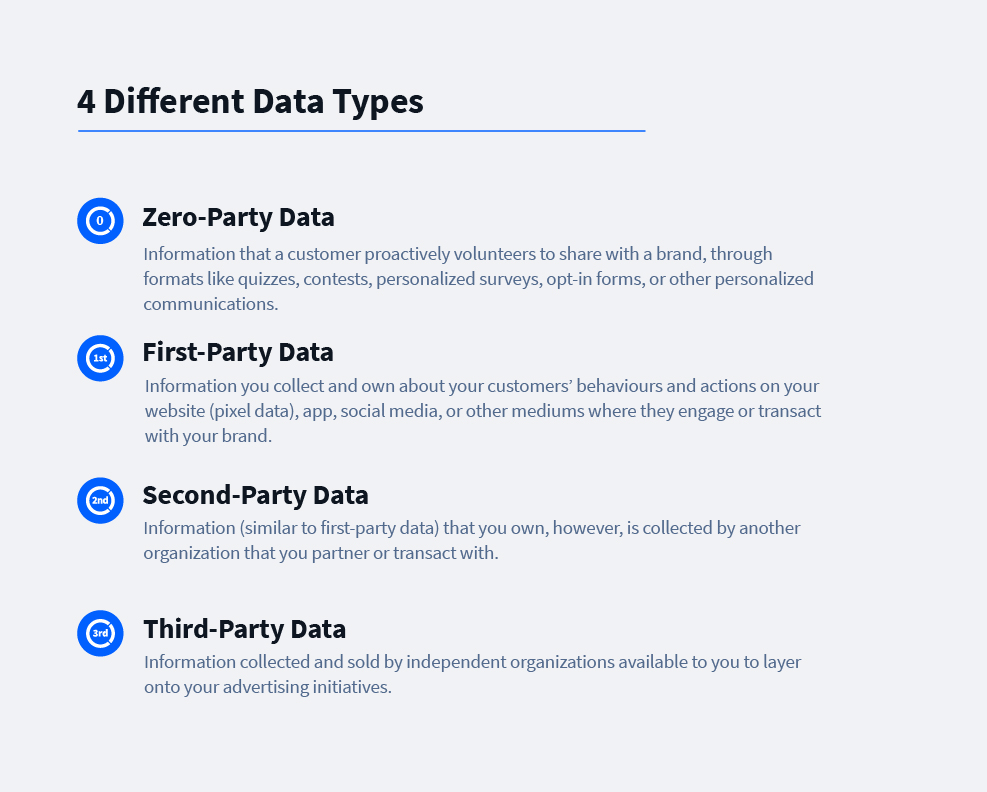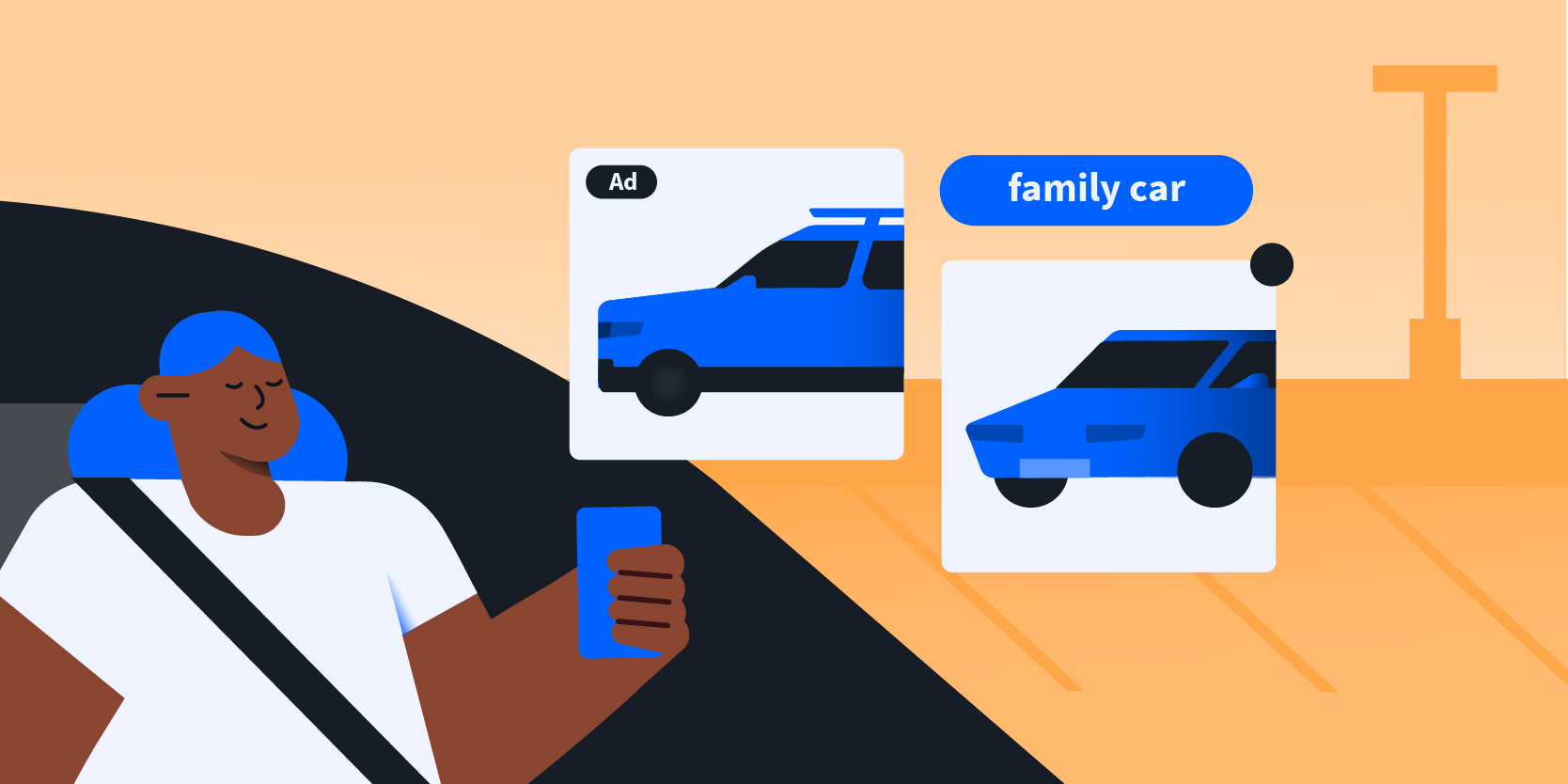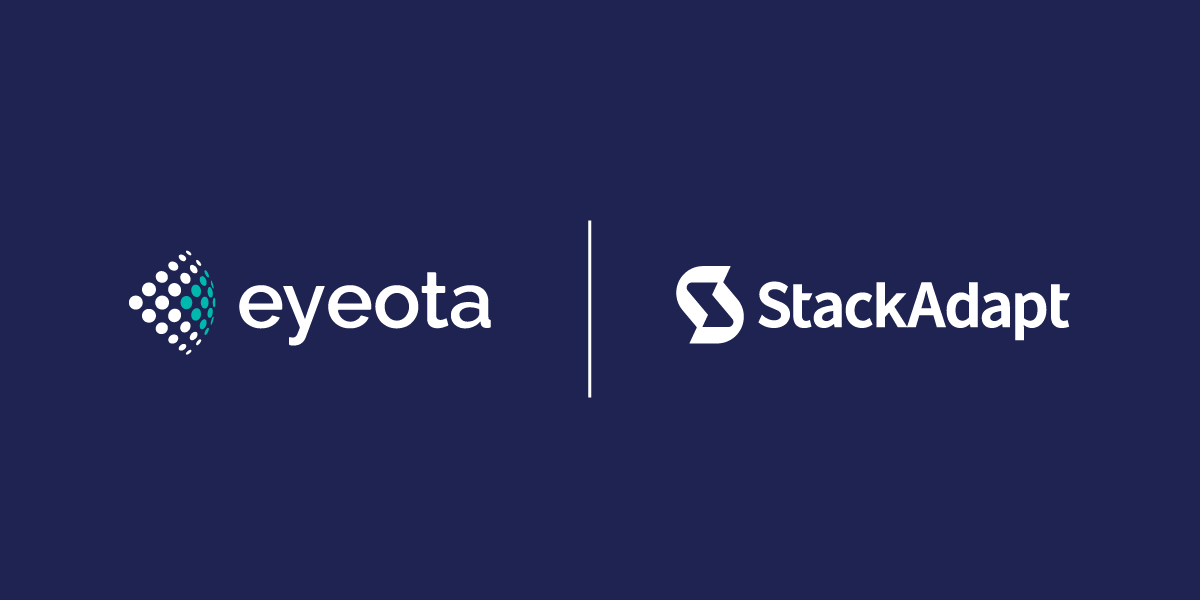Precise targeting to reach your desired audience is the most important piece of the advertising puzzle. You can have a great, creative campaign, but if your message isn’t reaching the correct demographic it is less likely to achieve success.
As there are so many options when it comes to audience targeting, it can be overwhelming to choose the best option for your brand and your goals—especially when you’re driving awareness and you don’t exactly know where to find your ideal customer. Enter 3rd-party audience segments.
What Is a 3rd-Party Audience
Third-party audiences are curated data sets, made of specific segments. Data intelligence companies, such as Epsilon or Factual, collect user data anonymously based on demographic or psychographic behaviour, and curate relevant audience segments.
To use 3rd-party audience segments in your campaigns, you can search the characteristics you are looking to target, like gender, age, geo, income, hobbies, political party, and more.
As you find segments that fit your desired targeting, the data provider will allow you to access and target users who match. This is a particularly effective tactic when employing a vertical targeting strategy, as there are a number of segments that fall under various vertical categories.
Why Not Use 1st-Party Data
First-party audiences are those which are proprietary to you and can be generated based on visits to, and actions on, your own website, for example. These are generally used for retargeting purposes or are suppression lists in prospecting campaigns, as you know these users are familiar with your site and have shown real interest.
That said, not only do they work best when used as a bottom-funnel tactic, but they can also restrict your scale if used at the top of the funnel.
Someone who is identified as part of your 1st-party audience has performed a conversion action including making a purchase, attending an event, or staying at your hotel. You know their buying habits, you have their information to retarget them.
If you were to only rely on 1st-party audiences, you would target the same group of visitors over and over again, and limit yourself to relying on these recurring customers or hoping for any organic traffic that may appear. It’s fine for a short while, but certainly not sustainable if you’re looking to expand your reach.

Why Use 3rd-Party Audiences At All
Third-party partners have relationships with data providers that an advertiser would not have. They enable you to increase your overall audience scope and gain access to transactional data and other in-depth access points that are highly scalable. There might be incremental budget required to access these audiences, but you will definitely be able to reach a more targeted set of users.
To build a pool for retargeting, so users return to your site, you first need to introduce them to your product. This is why 3rd-party audiences are important—they bring users to the top of the funnel, and allow you to reach net new users that may not have found your website organically. Your goal is to get enough scale to increase awareness, while still ensuring you are capturing individuals who are likely interested to learn more about your offer.
Once you have an idea of the types of users you want to target, you can even leverage lookalike audience targeting to expand your reach to additional users.
These users are not familiar with your site, so they are not 1st-party, but they are not necessarily in the existing audience segments. That said, they demonstrate similar characteristics to your target audience and therefore are worth targeting.
Finally, once your 3rd-party audiences and lookalike audiences have visited your site, you will collect them as 1st-party audiences for retargeting purposes. This is the ideal full funnel approach to audience targeting.

Using 3rd-Party Audiences for Vertical Campaigns
When running a vertical focused campaign, you need to consider the nuances and potential limitations that exist for each individual vertical. For instance, there are compliances and regulations you need to be aware of and follow for multiple verticals.
If you’re running a healthcare campaign you need to consider HIPAA, or for cannabis campaigns you need to be aware of geography and age regulations—similar to that of alcohol and tobacco.
Even with more general verticals, such as automotive and retail, you still need to be sure you’re targeting users who are interested in the product you’re advertising. Third-party audiences will ensure you are targeting more relevant users, while taking the appropriate restrictions into consideration to ensure your campaigns are compliant. The data providers do the work, so you don’t have to.
What a 3rd-Party Audience Segment Looks Like
Third-party audience segments can take various forms and come in all shapes and sizes—much like the people they’re composed of. Depending on the campaign you are looking to run and the ideal audience you want to reach, you can find an audience segment that should fit your criteria.
3rd-Party Audience Segment Examples
Here are some targeting examples, based on specific verticals, with some potential segments you may leverage in the StackAdapt platform:
Automotive
Scenario: Awareness campaign to get car buyers upgrading from mini to sedan to accommodate a growing family.
Provider: 123Push
Segment Name: 123Push > Consumer > Interest > Auto > Classes > Family Cars
Segment Description: Individuals interested in Family Cars based on automotive ownership data, surveys, online activity, and social media data.
Healthcare
Scenario: Naturopathic clinic prospecting people looking for alternative therapies and looking to get signups for a consultation through the site.
Provider: Dstillery
Segment Name: Dstillery > Consumer > Healthcare > Alternative Medicine Enthusiasts
Segment Description: People researching products and methods of alternative medicine.
Government
Scenario: Political Example: New independent candidate looking to get voters who are traditionally conservative to watch a video and vote differently.
Provider: Experian
Segment Name: Experian > Politics > Political Affiliation > Independent/Other
Segment Description: This segment contains consumers who are likely to be in the Independent or other political parties. Based on a combination of actual and modeled data of consumers registered with political organizations.
How to Use 3rd-Party Audiences In Your Media Mix
With numerous data providers and segments available, it’s simple to incorporate 3rd-party audiences into your digital strategy. Here’s one way to get started.
1. Identify your buyer personas. Identify the goals and pain points of your customers, and how your business can support them. Use this research to look for common characteristics within your ideal audience. As you group those characteristics together, you’ll have the basis of your buyer personas.
2. Align your personas with 3rd-party audience segments. Choose a few of the key characteristics of your buyer personas to align them with 3rd-party audience segments. Look for segments that have those characteristics in common with your buyer personas.
3. Build a campaign around those segments. Since 3rd-party audiences are best used for building awareness, you will likely use them in your prospecting campaign to increase your reach to a wider range of prospects. With the right targeting, you can use your creatives to capture the attention of the highly relevant users.
Once you have attracted new users through 3rd-party segments, you have the ability to retarget interested prospects. While buyer personas are a natural starting point, 1st-party data is the best way to drive the sale home at the bottom of the funnel.
Want to learn more about 3rd-party segments and how you can add them to your campaigns? Request a demo to learn more about StackAdapt.
3rd-Party Audience FAQs
Third-party audiences are audiences created using curated data sets that are made using specific segments. Third-party audiences leverage third-party data, which is any data that has been collected by another party, without any link to your company or business
Third-party audience data can help you gain consumer insights, identify new potential customers and audience segments, and optimize your digital campaigns for increased performance.





